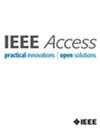平衡室内VLC中的照明和通信:多种LED配置对系统性能的影响
IF 3.4
3区 计算机科学
Q2 COMPUTER SCIENCE, INFORMATION SYSTEMS
引用次数: 0
摘要
本研究探讨了多灯具布置对可见光通信系统(VLC)双重功能的影响,重点是它们对照明均匀性和通信性能的影响。对各种灯具分布(从单个灯具到多个灯具)进行全面分析,以确定优化照明质量和数据传输效率的配置。特别是,该研究检查了三种灯具布置-圆形,方形和圆方形,在1至12个灯具配置中实现,并包括在室内环境中的理论建模和实验验证,涵盖单输入单输出(SISO),多输入单输出(MISO)和多输入多输出(MIMO)配置,最高可达3 \ × 2$系统。采用正交频分复用(OFDM)和重复编码(RC),将数据分布在子载波上,同时在发射机之间复制信号,以提高空间分集。关键性能指标,如照明,均匀性,质量因子($F_{a}$)和变异系数(CV(RMSE)),评估照明,而通信性能评估使用误码率(BER)指标。结果表明,随着照明灯具数量的增加,整体性能得到改善,但存在一个饱和点,超过该饱和点,额外的照明灯具产生递减的回报。我们的研究结果强调了VLC系统中照明均匀性和通信性能之间复杂的相互作用,为在智能室内环境中设计高性能MIMO系统提供了有价值的见解。本文章由计算机程序翻译,如有差异,请以英文原文为准。
Balancing Illumination and Communication in Indoor VLC: Impact of Multiple LED Configurations on System Performance
This study explores the influence of multiple luminaire arrangements on the dual functionality of visible light communication systems (VLC), focusing on their impact on illumination uniformity and communication performance. A comprehensive analysis of various luminaire distributions, ranging from single to multiple luminaires, is performed to identify configurations that optimize lighting quality and data transmission efficiency. In particular, the study examines three luminaire arrangements—circular, square, and circular-square—implemented in configurations of 1 to 12 luminaires, and includes theoretical modeling and experimental validation in indoor environments, covering single-input single-output (SISO), multiple-input single-output (MISO), and multiple-input multiple-output (MIMO) configurations up to $3 \times 2$ systems. Orthogonal frequency division multiplexing (OFDM) with repetition coding (RC) is employed, which distributes data across subcarriers while replicating signals across transmitters to enhance spatial diversity. Key performance metrics, such as illumination, uniformity, quality factor ( $F_{a}$ ), and coefficient of variation (CV(RMSE)), are evaluated for illumination, while communication performance is assessed using bit error rate (BER) metrics. The results demonstrate that the overall performance is improved as the number of luminaries increases, however a saturation point exists beyond which additional luminaires yield diminishing returns. Our findings highlight the complex interplay between illumination uniformity and communication performance in VLC systems, providing valuable insights for designing high-performance MIMO systems in smart indoor environments.
求助全文
通过发布文献求助,成功后即可免费获取论文全文。
去求助
来源期刊

IEEE Access
COMPUTER SCIENCE, INFORMATION SYSTEMSENGIN-ENGINEERING, ELECTRICAL & ELECTRONIC
CiteScore
9.80
自引率
7.70%
发文量
6673
审稿时长
6 weeks
期刊介绍:
IEEE Access® is a multidisciplinary, open access (OA), applications-oriented, all-electronic archival journal that continuously presents the results of original research or development across all of IEEE''s fields of interest.
IEEE Access will publish articles that are of high interest to readers, original, technically correct, and clearly presented. Supported by author publication charges (APC), its hallmarks are a rapid peer review and publication process with open access to all readers. Unlike IEEE''s traditional Transactions or Journals, reviews are "binary", in that reviewers will either Accept or Reject an article in the form it is submitted in order to achieve rapid turnaround. Especially encouraged are submissions on:
Multidisciplinary topics, or applications-oriented articles and negative results that do not fit within the scope of IEEE''s traditional journals.
Practical articles discussing new experiments or measurement techniques, interesting solutions to engineering.
Development of new or improved fabrication or manufacturing techniques.
Reviews or survey articles of new or evolving fields oriented to assist others in understanding the new area.
 求助内容:
求助内容: 应助结果提醒方式:
应助结果提醒方式:


